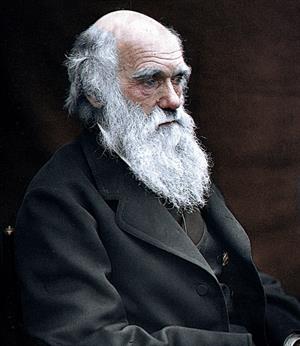
PUMPA - SMART LEARNING
எங்கள் ஆசிரியர்களுடன் 1-ஆன்-1 ஆலோசனை நேரத்தைப் பெறுங்கள். டாப்பர் ஆவதற்கு நாங்கள் பயிற்சி அளிப்போம்
Book Free DemoAll the living organisms found on the earth are identified and categorised based on their body forms and functions. The impact of certain characteristics on the body design is more when compared to the others. When one body design comes into play, it shapes all the effects of the other subsequent design changes as it already exists.
Thus, the earlier characteristics are likely to be more basic than the later ones.
Evolution
From the above, it can be understood that the classification of life forms is closely related to evolution.
Most of the life forms seen by us today have originated due to the accumulation of changes in body design. These changes make the organisms survive better with the change in the environment. This is known as evolution.
Charles Darwin first gave the ideology of evolution in 1859in his book, The Origin of Species. On linking evolution to classification, the organisms can be grouped into two types, such as the 'primitive' or 'lower' organisms and 'advanced' or 'higher' organisms.

Charles Darwin
- The organisms in which the changes are not seen and have an ancient body design are known as primitive organisms.
- The organisms in which the changes are seen in their body design are known as advanced organisms.
In reality, as these terms do not correctly relate to the differences, they are not entirely correct. Hence, in general, we can say that some organisms are older, and some are younger. But at the same time, as there is a possibility for the complexity of the body design to increase with an increase in the evolutionary time, we can say that the older organisms are simpler and the younger organisms are more complex.
Biodiversity
The diversity of life forms is known as biodiversity.
The term biodiversity is a word which is commonly used to denote the various life forms found in a particular region. An environment is shared by a variety of life forms which are affected by each other. Hence, a stable community of different organisms is formed.
In recent times humans have been playing a significant role in changing the balance of these communities. The diversities in these communities is also being affected by specific characteristics such as land, water, climate and so on. Specific reports state that there are about 10 million species on this planet, and we know only one or two millions of them.
The tropic of cancer and the tropic of Capricorn are the two warm and humid tropical regions found on earth. Hence, they are rich in the diversity of plants and animals and are known as the region of megadiversity. More than half of the biodiversity of the planet is concentrated in a few countries such as Brazil, Colombia, Ecuador, Peru, Mexico, Zaire, Madagascar, Australia, China, India, Indonesia and Malaysia.
Reference:
https://upload.wikimedia.org/wikipedia/commons/thumb/9/9d/Charles_Darwin%2C_English_naturlist%2C_colored.jpg/512px-Charles_Darwin%2C_English_naturlist%2C_colored.jpg